San Francisco offers much in the way of recreational life –– museums, cafes, clubs. However, it is also home to a myriad of hiking trails, mountains and forests ripe for exploring. As the holiday season approaches, students in the city are going to find themselves with a lot more free time and there will be many opportunities in the coming weeks to venture into the city.
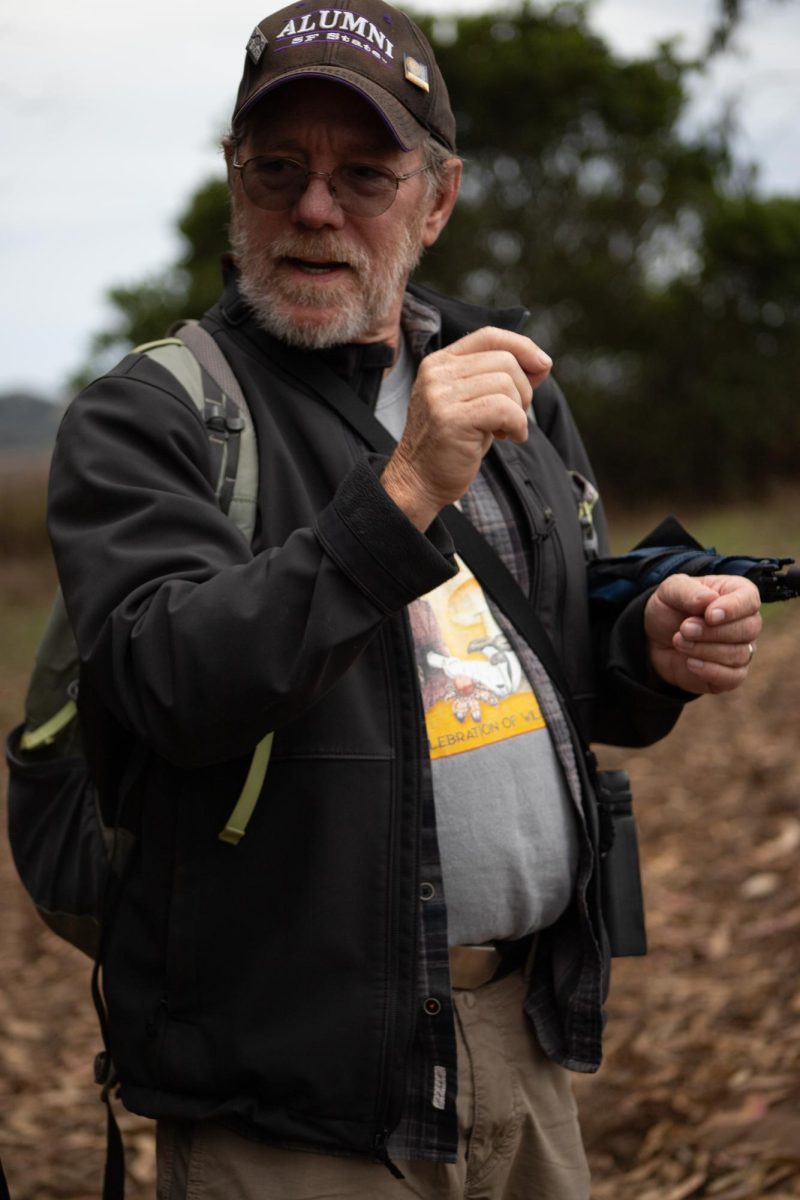
(Colin Flynn )
For those wanting the best of both worlds — an urban and a natural setting — the appeal is there.
But for San Francisco State University students, many of whom are new to the area, the safety risks associated with outdoor activities may prove unfamiliar — namely, the local poisonous plants that escape the notice of the uninformed. Those who don’t often partake in recreational activities –– like hiking or camping –– might be even more unprepared to encounter such plants due to a lack of knowledge on what they look like and how to identify them.
According to Eleanor Morgan, a trip guide with campus group Gator Outdoor Adventures, some of the most common poisonous plants in San Francisco are poison oak, stinging nettle and poison hemlock. The GOA periodically hosts outdoor activities like hiking and backpacking and frequently welcomes beginners.
Poison Oak
“I think every trip that we have, you most likely will encounter poison oak,” Morgan said.
Poison oak’s most distinct quality is its leaves, which grow in clusters of three, according to Morgan. Poison oak is also shiny due to the oils that coat the leaves and stems.
According to California Native Plant Society board member Candace Low, the chemical compound in the oil, also known as urushiol, causes skin irritation and rashes that occur after making skin contact with poison oak.
“The oils are meant to deter insects from eating it and humans just ended up being allergic to it,” Low said.
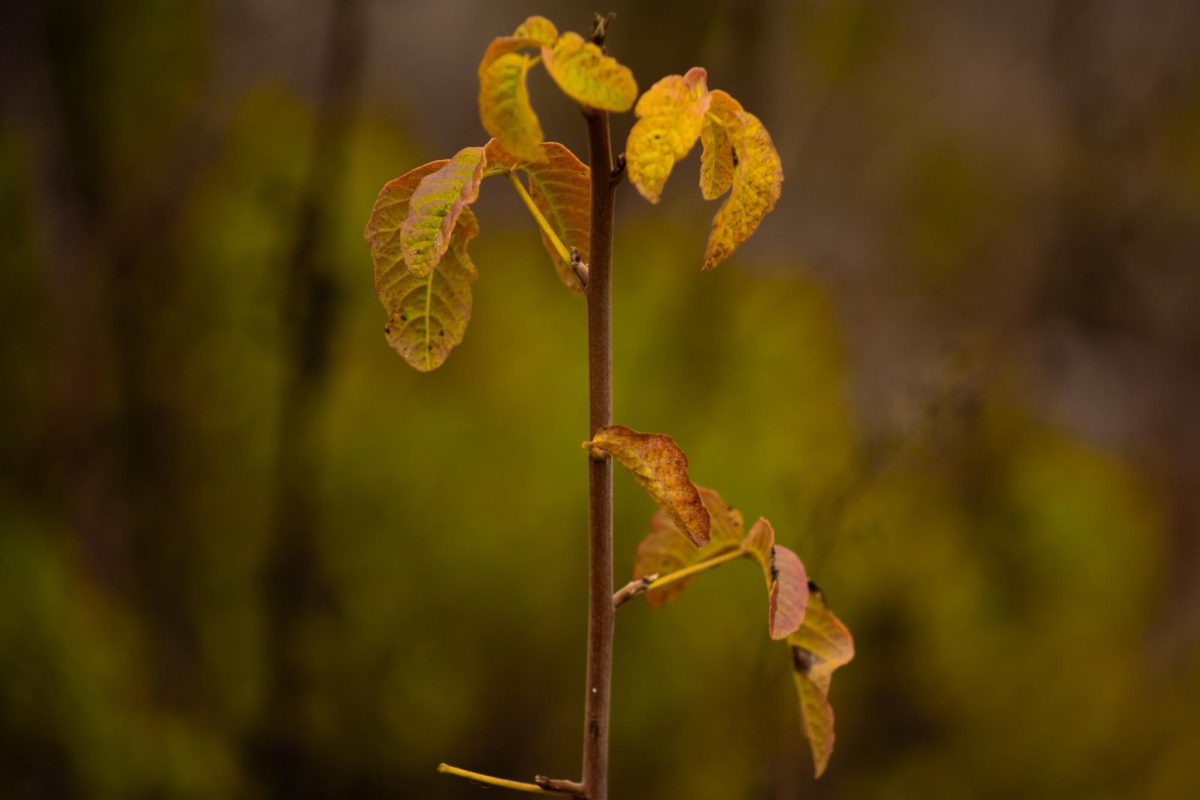
The sap of poison oak contains a toxin called urushiol oil. One pinhead of urushiol can easily infect up to 500 people. Nov. 15, 2023. (Colin Flynn / Golden Gate Xpress)
According to Morgan, the changing of the seasons can make recognizing poison oak difficult, especially when the oil can be found on all parts of the plant.
“You can find it both on the leaves and the sticks, which becomes a problem, especially this time of year,” Morgan said.
As the weather gets colder, poison oak leaves will fall off, only leaving the stem, which can appear to be only sticks. However, the oil will remain, making it more difficult to notice and therefore easier to make contact with.
“You can still get it but you won’t see the leaves,” Morgan said. “This time of year is when I’ve usually gotten it because it’s just kind of sticking out – you won’t know what it is.”
Stinging Nettle
Another commonly found plant in San Francisco is stinging nettle, which causes irritation upon making contact with human skin and lingers before fading.
Although not deadly, the effects of the plant are still painful and aggravate the skin, which can be exacerbated due to allergy.
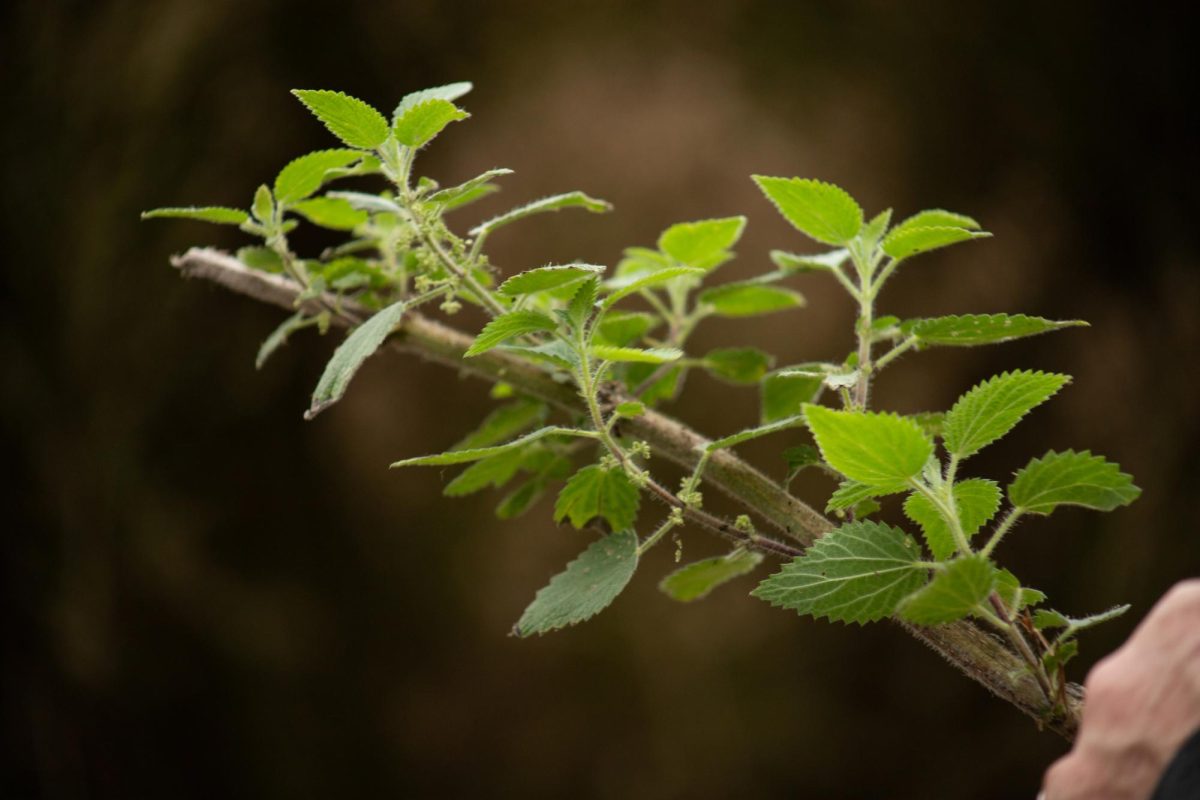
According to John Blair, a former biology lecturer and director of SFSU’s Sierra Nevada field campus, the effects of stinging nettle are due to urticating hairs –– the hairs on stinging nettle that irritates when it comes into contact with skin. The hairs break when they make contact with skin, then deposit toxins that then cause the irritation we are familiar with.
Low explained the nature of these toxins and how they are part of a plant’s evolution.
“All of these kinds of toxins, they’re called secondary chemicals because they evolved secondarily as a defense against the herbivores that ate these plants,” Low said.
According to Blair, stinging nettle also has fairly large leaves with serrated edges.
Poison Hemlock
Poison hemlock is in the carrot family, and the young growth looks a lot like carrot tops, according to Blair. The plant has highly dissected leaves – meaning they possess many lobes. At the base of the leaves and all over the stems there are red splotches –– a key characteristic of poison hemlock.
“The root of poison hemlock does resemble carrots to some extent in terms of shape, but it’s white,” Blair said.
Although touching hemlock is perfectly safe, ingesting it is almost always fatal, which poses a danger to small children and pets in particular.
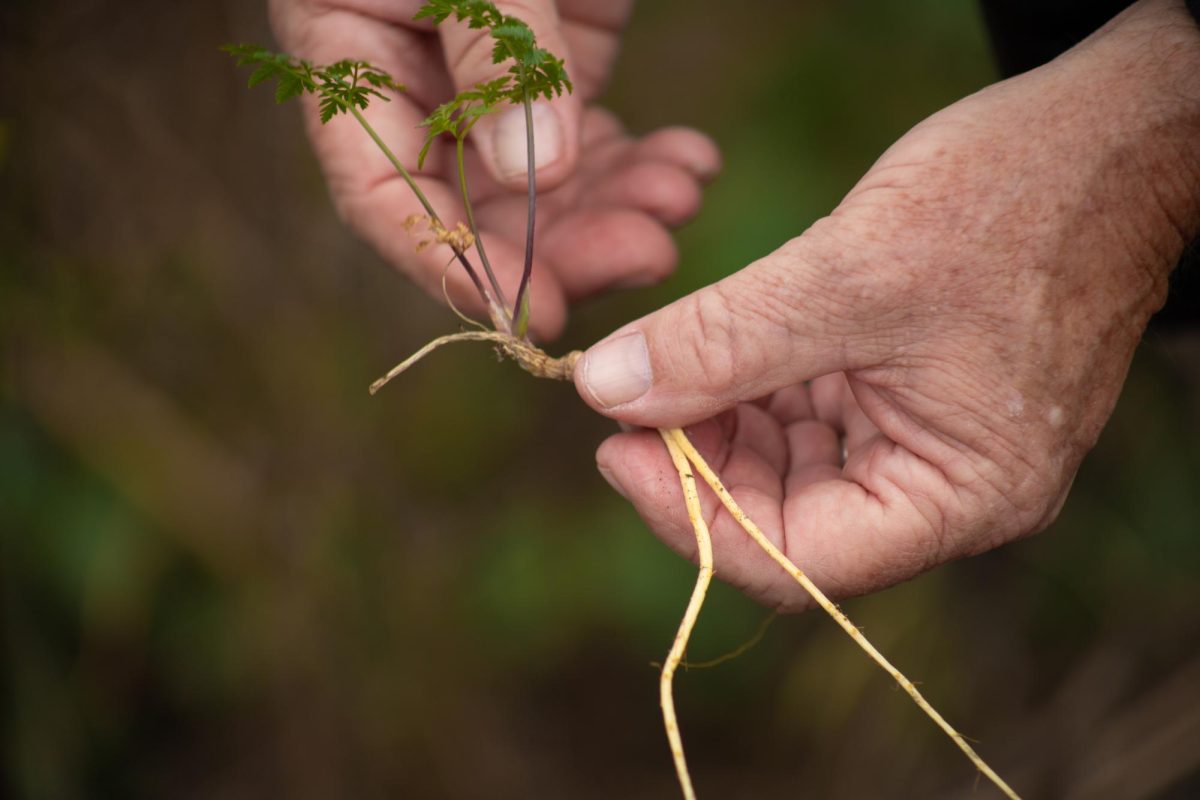
The plant itself, when fully mature, can grow to 10 or 12 feet in height. Hemlock tends to grow very thickly, often a fieldsworth if left unattended. According to Blair, the white flower clusters can be the size of a small dinner plate.
“Oftentimes, you can find poison hemlock over Lake Merced, for example, or some of the other parks around San Francisco,” Blair said.
Ultimately, the importance of being able to identify these plants is important even for those uninclined in outdoor activities. It can make the difference between a good experience and a bad one, which –– in a new environment –– can make all the difference.
According to Morgan, the best tips are to wear long sleeves to prevent making contact. When returning from the outdoors, Morgan suggested removing the clothing that’s been worn out and immediately putting it through the wash, as well as showering to wash off anything that’s made contact with the skin.
“If you do know what you’re looking for, you know how to avoid it, you can go out multiple times,” Morgan said. “You can have better and bigger adventures.”




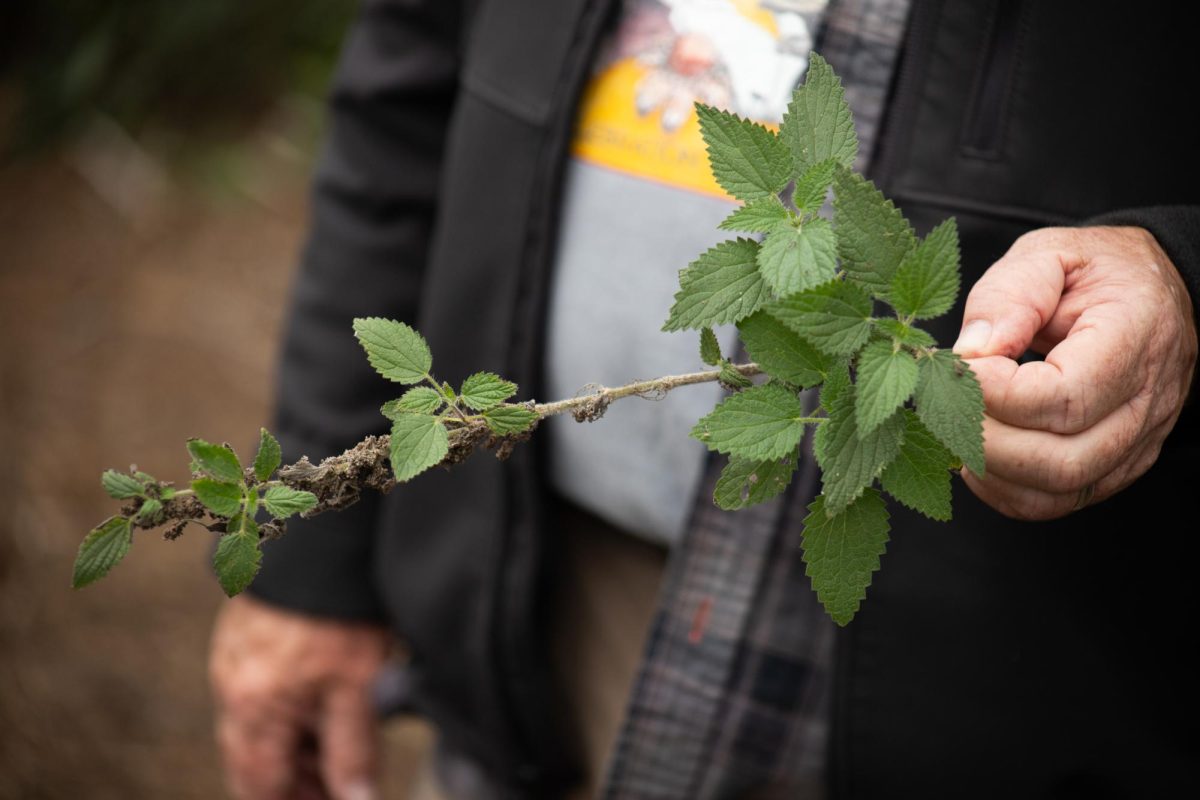
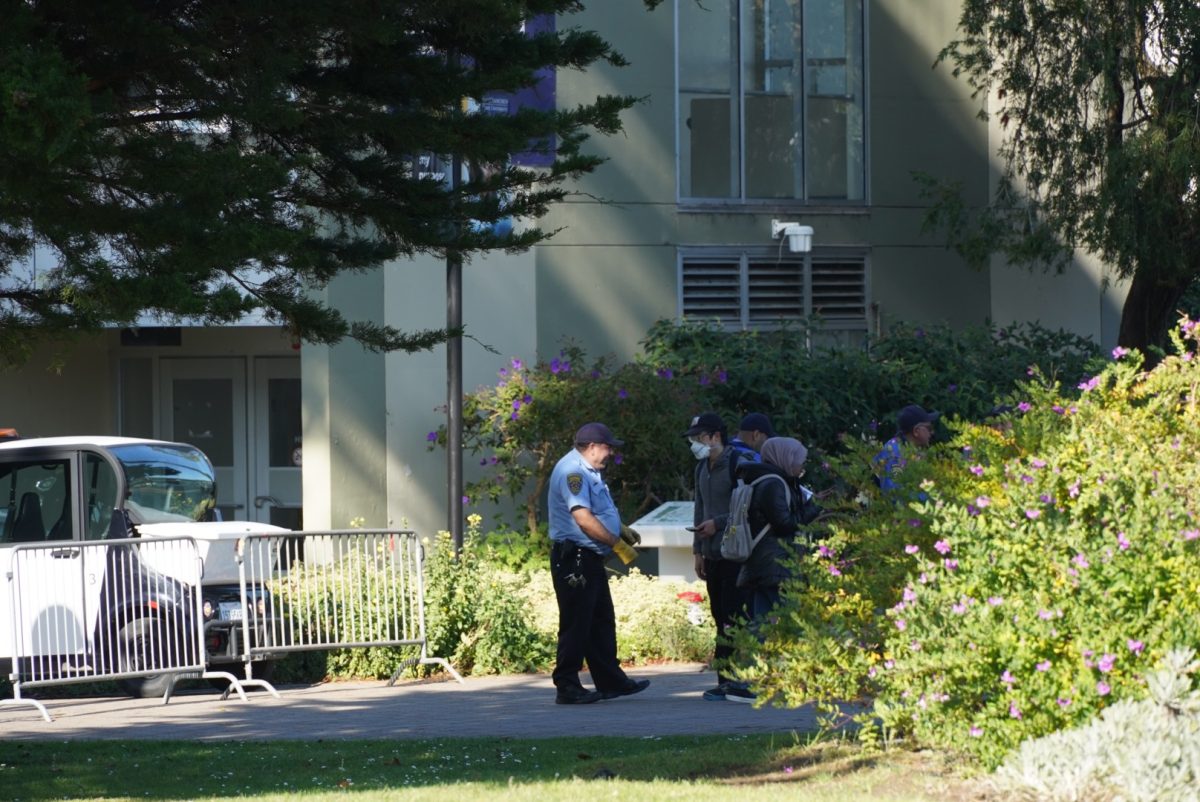




Charlie • Nov 22, 2023 at 8:38 am
In the 70’s I used to have terrible poison oak rashes that knocked me out for weeks. You just have to know all the ways poison oak looks. It can be bushy and it can be viny, it can be just coming up out of the ground. It can be red leaved and beautiful, or bright glistening green, it can be covered in berries. You have to know what it is when you see it. Which means you need to start paying attention to plants. Remember if you take your dogs and they run off trail they are running through it! And later when you hug them you are getting it all over you. Nettles and poison hemlock have never been a problem for me. I don’t put hemlock in my mouth and I don’t slap my bare skin with nettles (but you could cook them and make a nutritious meal).